We could say that, if we want to take a linguistic turn on it, it is the difference between learning the lexis of a landscape, which is very important, and learning the syntax of a landscape, which is even more important; that is how these things connect. From the very beginning of my writing, a book called "Mountains of the Mind" actually drew on 20 years at that point of climbing, of being in the world and seeing what happens at altitude, at height, where all sorts of norms get changed, turned upside down, pristinated, scintillated by the strangeness of the upper world of altitude.
Knowledge and movement
Professor of Literature and the Environmental Humanities, Writer
- The first principle of ecology is that everything is connected to everything else.
- Walking is our oldest technology for thinking and perceiving; we know as we go, and movement lets the world touch back and shape knowledge.
- We have lost touch with the world, contact with the world, as a daily part of lived experience.
- Knowledge is necessarily incomplete; the thing to be known grows with the knowing, so humility and curiosity beat conquest.
- Landscape is not just land but perception at work, and deep time dwarfs human scales and charges us with long-term responsibility.
Everything is connected
The first law, the first principle of ecology, is that everything is connected to everything else. The walker, mountaineer and environmentalist John Muir, who is the father of the American National Park System, has a line somewhere in one of his journals — I will get it slightly wrong — where he says, when we try to pick out any one thing in the universe, we find it hitched to everything else. This has always made absolute sense to me, and it is one reason why, as a writer and researcher, it has always been important to put my body in the way of place, to visit the places I have written about, to meet, to talk, to feel the weather — to understand how the parts of mountains, rivers, the people and the creatures who live in, and are enabled and enlivened by them, connect.
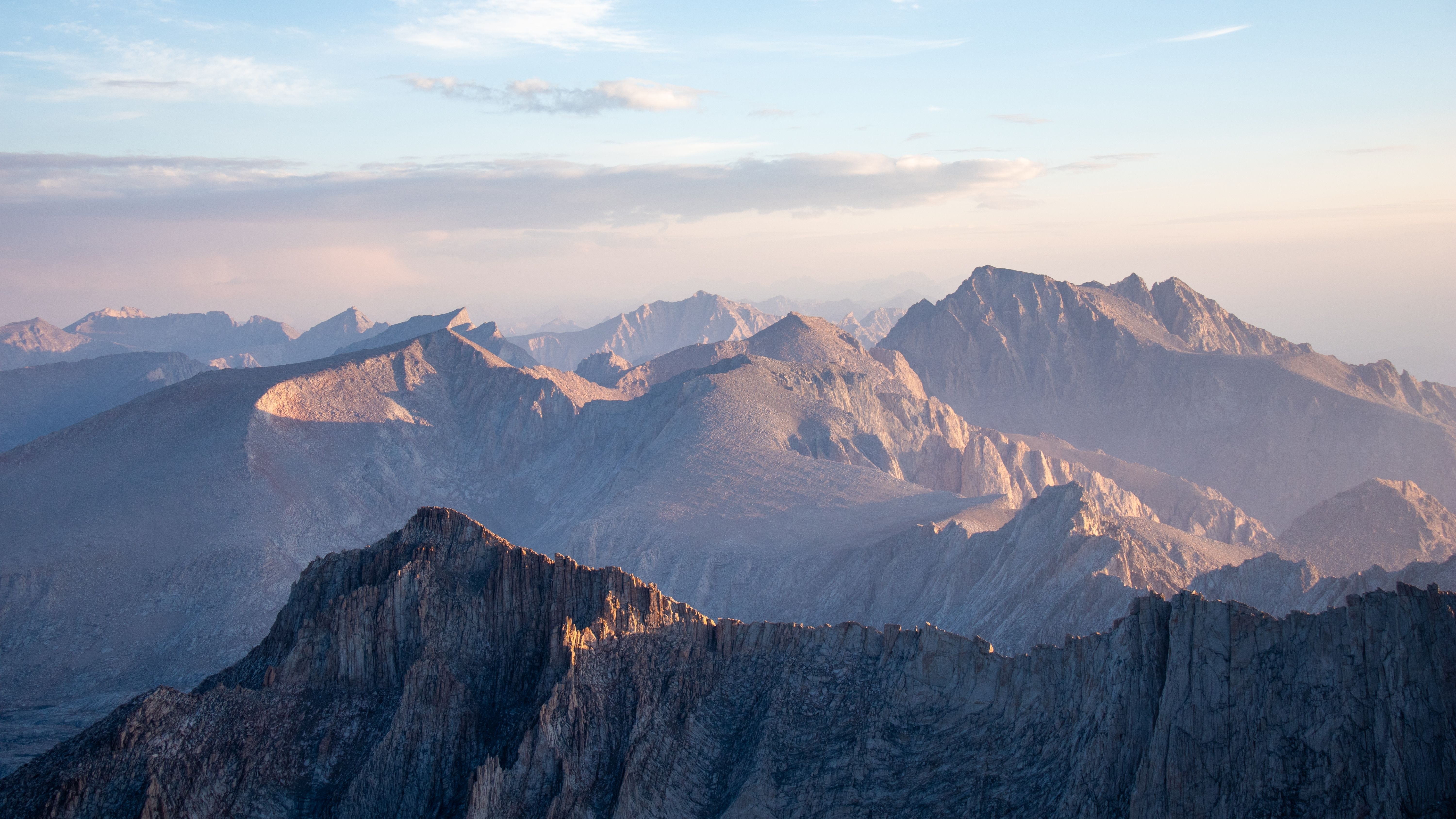 Scene from the John Muir Trail, California © Shutterstock
Scene from the John Muir Trail, California © Shutterstock
Losing touch with the world
The period in which I have been living and writing has also been a period of increased disembodiment. Virtualization or digitization might be other names for what has happened. I still remember sending my first email when I was a student in Cambridge in the mid 90s, and back then I would never have imagined that I would spend, as I now do, probably eight hours of my day at a screen, sitting, talking to the black mirror of phone or laptop. My experience is one of many people's. We have lost touch with the world, contact with the world, as a daily part of lived experience.
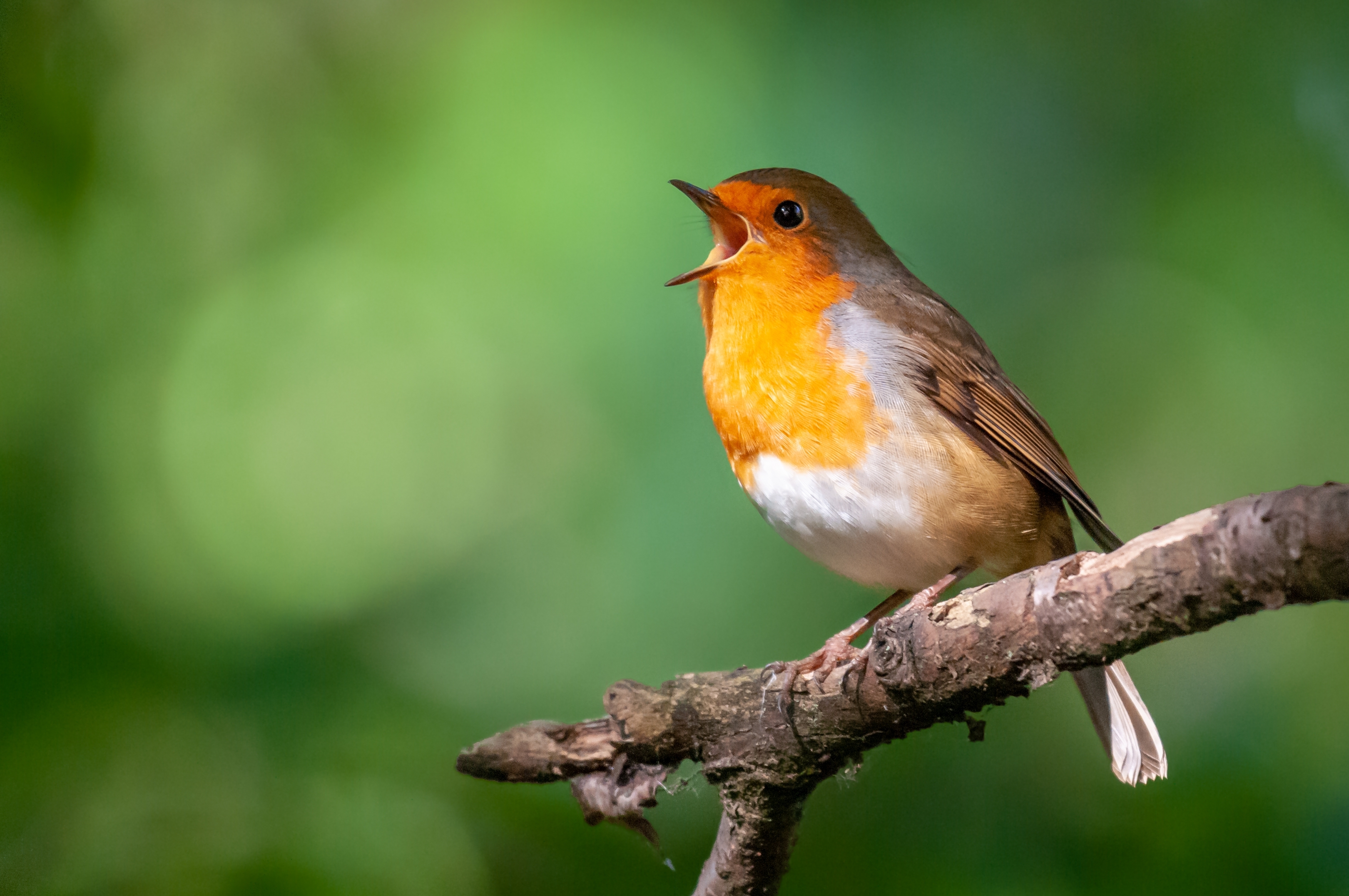 A European Robin © Shutterstock
A European Robin © Shutterstock
Of course, it is going on around us. I can hear a robin singing as I am speaking to you, and I am aware of the turn of the seasons and the day drawing to a close, but I have always also been interested in what it means to not lose touch, how we build up relationships with what is very chillily to my mind and externalizingly called the environment. The environment sounds like the thing which is beyond us, outside us, surrounding us, but of course it is actually what we are always in.
Knowing through the body
Within the Western tradition, from Descartes onwards through what we call the Enlightenment, there has been a tendency to think of knowledge as that which is produced from within, and at some level confined by the skull, the brain. Descartes gives us the cogito. I actually think Descartes has had a pretty difficult time of it. He is often villainized as the father of rationalism and of dualism, but there was another Descartes, the Descartes who was very drawn by wonder. He says wonder is the first of all the passions. Broadly speaking, there has been a tendency to think of the mind as the only part of us that can know, that can produce and assess knowledge. Someone like Maurice Merleau-Ponty, the French phenomenologist whom I read when I was a graduate student, undoes that binary, refuses it entirely and sees knowledge as an ongoing weaving and unweaving co-production between the self and the world, between the body and the world.
 Shutterstock
Shutterstock
He talks about how when we touch the world we are being touched back. When we press the flesh of the world, the world's flesh is pressing ours in return. This has always struck me as intuitively true. A writer who became very important to me, Nan Shepherd, the Scottish walker and writer — who I do not think had read Maurice Merleau-Ponty when she was beginning to write her masterpiece about mountains and mountaineering, "The Living Mountain", which she finished in the mid 40s — was coming to very similar conclusions. Instead of arriving at these conclusions within the university system, she had arrived at them by walking the Cairngorm mountains. Really, that was a proof of the proposition that, as Nan says, the body itself may be thought to think.
Walking as thinking
I have always walked, loved walking — long-distance walking — mountaineering as well. What we call the approach in climbing has always been an interesting phase to me. In the late 2000s, I became particularly interested in the relationship between walking and knowledge, and I began several years, five years, of following paths — not roads, not hard tarmac roads, but footpaths around the world — seeing where they led, seeing who they brought me into contact with and using them as a means of navigating past, story, song, future and ideas.
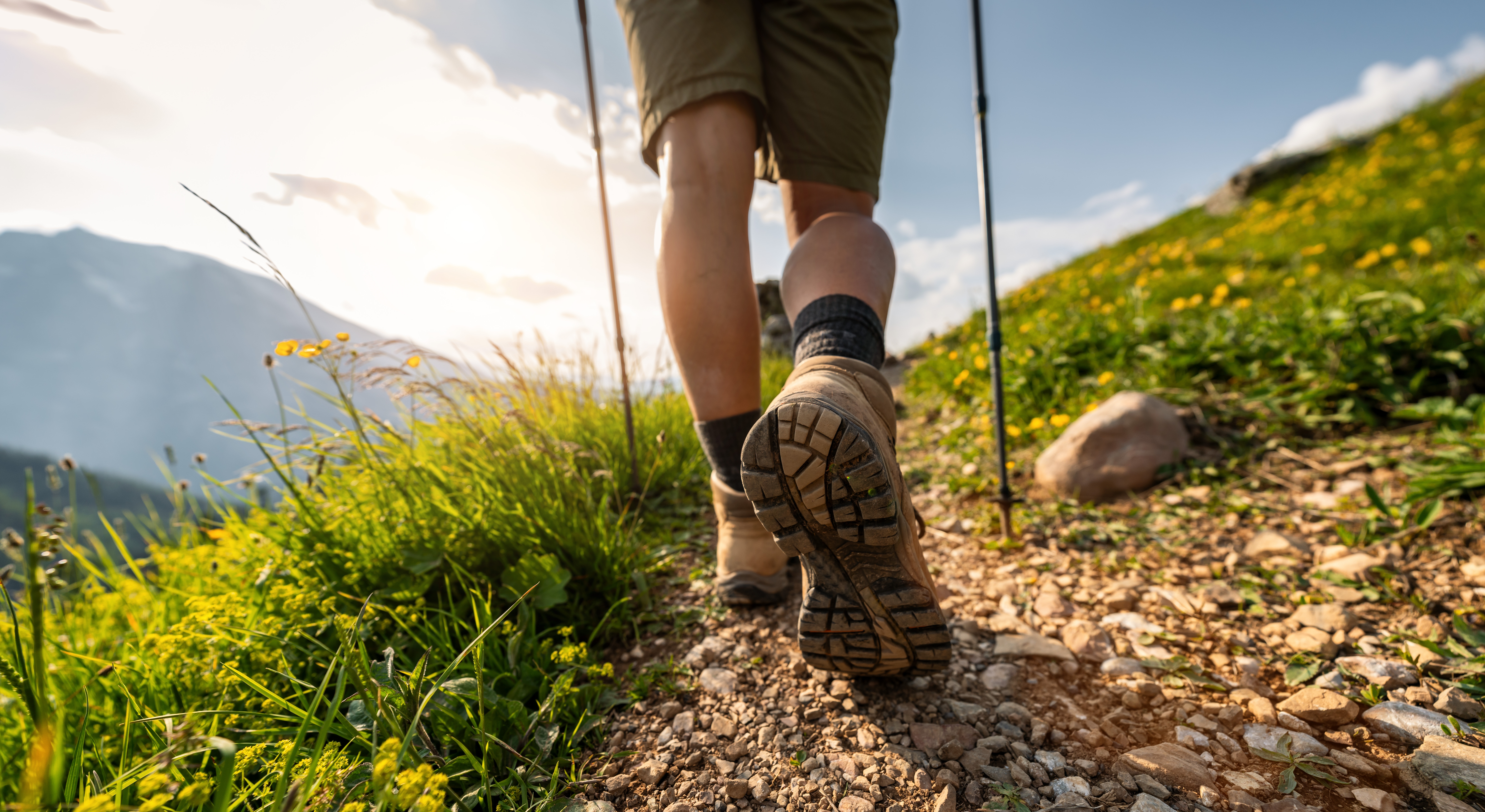 Shutterstock
Shutterstock
That became a book called "The Old Ways". Again and again, I came across two ideas. The first is that walking is our oldest technology. It is a means of perception, and we have used it from the very beginning. We are walking creatures. An outgrowth of that is the idea that "we know as we go," to borrow the phrase of Tim Ingold, the anthropologist, archaeologist and many other things besides. There is then a very long philosophical tradition of people (mostly men but not only men, that has probably less to do with walking than with the way philosophy has been passed down to us), who have spoken of this relationship between walking and knowledge. I like Kierkegaard's line best. He says the mind works best at three miles an hour, and I think of Virginia Woolf as well. She talks about Norfolk, I believe, being a walking, philosophizing landscape — the idea that she does part of her thinking through walking and in relationship with land and place. This makes perfect sense to me. There is a religious version of that in the idea of the pilgrimage. I became fascinated by pilgrimage during the years of following old paths. There again, Rowan Williams's definition of pilgrimage is: the place works on the pilgrim. The destination is important, but the journey is more important.
The living mountain
When I was growing up as a young climber, I was obsessed with the peak. I was obsessed with risk, with adventure, with probably something a bit like glory. Then I read Nan Shepherd. That changed the ways I think about mountains, about mountaineering — indeed, probably about knowledge. Shepherd herself was mad, as she put it, for the tang of height when she was a young walker, a mountain girl in the Cairngorms in the early part of the 20th century.
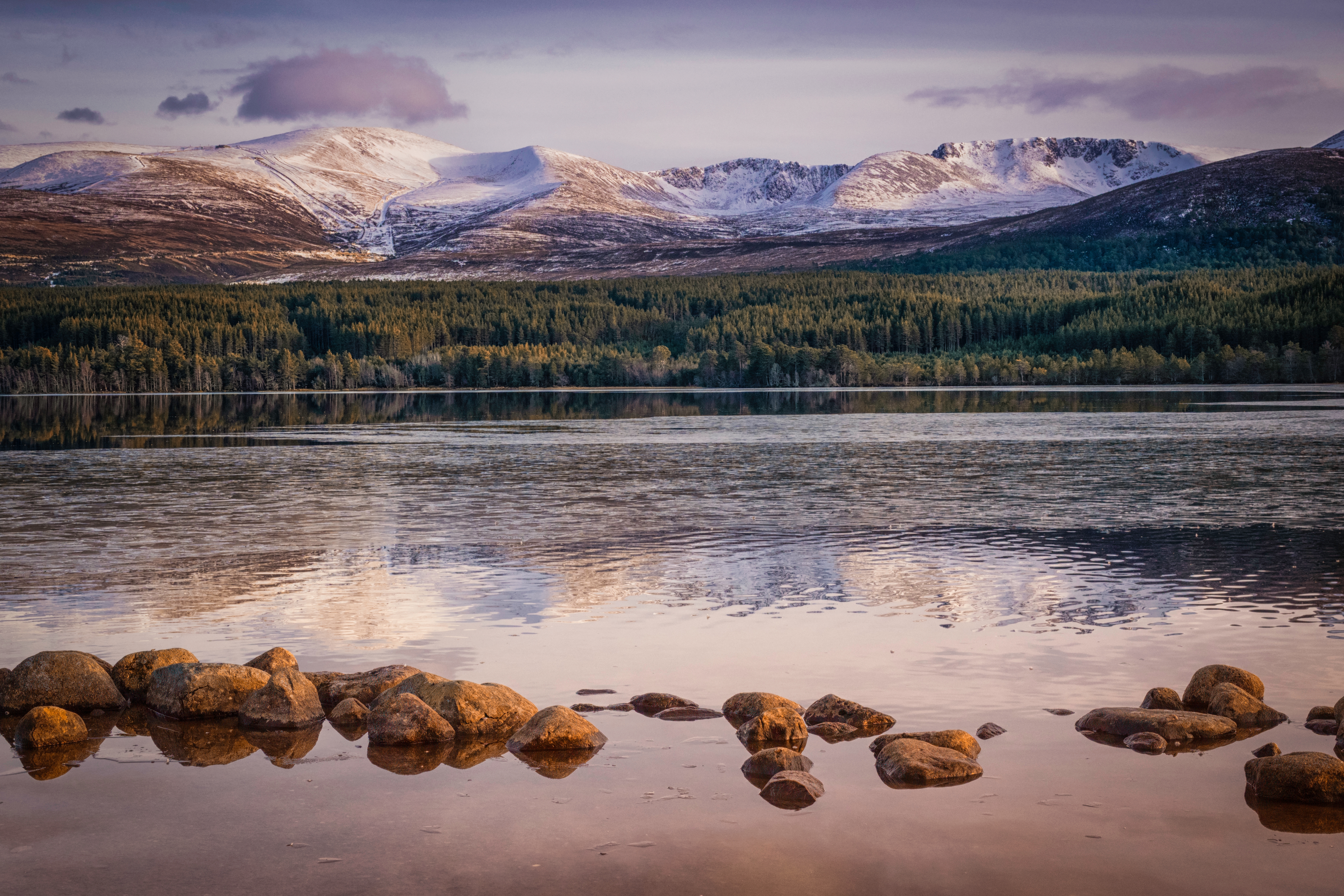 Loch Morlich in the Badenoch and Strathspey area of Highland, Scotland © Shutterstock
Loch Morlich in the Badenoch and Strathspey area of Highland, Scotland © Shutterstock
Gradually she arrived at this much more philosophical, non-goal-oriented relationship with the mountain. She says, I go to the mountains as I would visit a friend, and she becomes as interested in passes as she is in peaks — as interested, more interested, in pilgrimage than in conquest. "The Living Mountain" — this book that has been so important to me — is also really a book about knowledge. She has this wonderful phrase. She says, "The thing to be known grows with the knowing." There is this sort of Ulyssesian arch of knowledge that you can see but that will always retreat in the measure that you approach it. The thing to be known grows with the knowing. Another writer who is very important to me, Tim Robinson, an English-Irish artist, cartographer and writer of the Aran Islands, speaks of what he calls "the delusion of a comprehensible totality". You can never know one place, one island, one mountain massif, even one garden fully, and we need to be at ease with partiality of knowledge and again recognize that ignorance is its own encouragement.
A tinkerer of knowledge
I have had a number of mentors. Some of them I have never met — Nan Shepherd I have only read — and some I have read, met and lost. One of those, probably the most important of them, is a man called Roger Deakin, who was a swimmer, a filmmaker, an environmental activist and a writer, and he wrote a book called "Waterlog: A Swimmer's Journey through Britain" before he died. Then, after his sudden death, I helped bring his second and third books, "Wildwood: A Journey Through Trees" and "Notes from Walnut Tree Farm", into the world, which was a very emotional process; this was back in the mid-2000s. Roger called himself once a collector of knowledge. I am not sure I believe him. He was more a tinkerer of knowledge. He would pick up pots and pans, interesting scraps of metal and thought, and he would gather them. I remember going to his house, and it was an old Elizabethan farmhouse that he had rebuilt himself from a ruin, and it had a spring-fed moat that he swam in; I swam in it with him. His house was full of pebbles and saplings, plants on windowsills and feathers, strange things he had collected. He put me in mind of Vladimir Nabokov, who said the process of writing a novel begins with the collecting of fluff, pebbles and feathers. I think he was a collector of knowledge in the sense of being haphazard, and I suppose there is an element of that haphazardness that rubbed off on me.
Perception and landscape
There is a line by the romantic poet William Blake, a mystic and painter, and he says the tree that moves some people to tears of joy is to others just a green thing that stands in the way. From the very beginning, I have always been interested in that projective overlay that is what we call landscape. Landscape, the word, comes into English from the Dutch in the 16th century. It comes from the school of Dutch landscape painting, landscape painters, and it means a unit of perception or even a unit of occupation. From the very beginning, that idea of landscape has been imbricated with the idea of seeing, of perspective, of perception, of human presence. Much of the work I have done, and so many others have done, is delaminating, teasing apart, the relationship between matter, the given world; land, the land of landscape; and scape, the scaping that we do, that we are always doing in our ongoing imaginative, emotional and bodily relationships with land, with place.
A landscape mystic
I have had a long interest in the mystical tradition. That might be the anonymous 14th-century poem “The Cloud of Unknowing,” or Pseudo-Dionysius, the Syrian mystic who became so popular in the Middle Ages. He talks about what has become known as the apophatic tradition, that there are things we cannot speak of. We can only speak of their negative, of what they are not, of speaking around them. Although I grew up within the Christian practice, I have never been a believer. If I were to follow a religion, it would be a polytheistic one and not a monotheistic one. Polytheism makes much more sense to me, and if I were to found a religion, it would probably be like Philip Larkin's. It would probably be a religion founded on water.
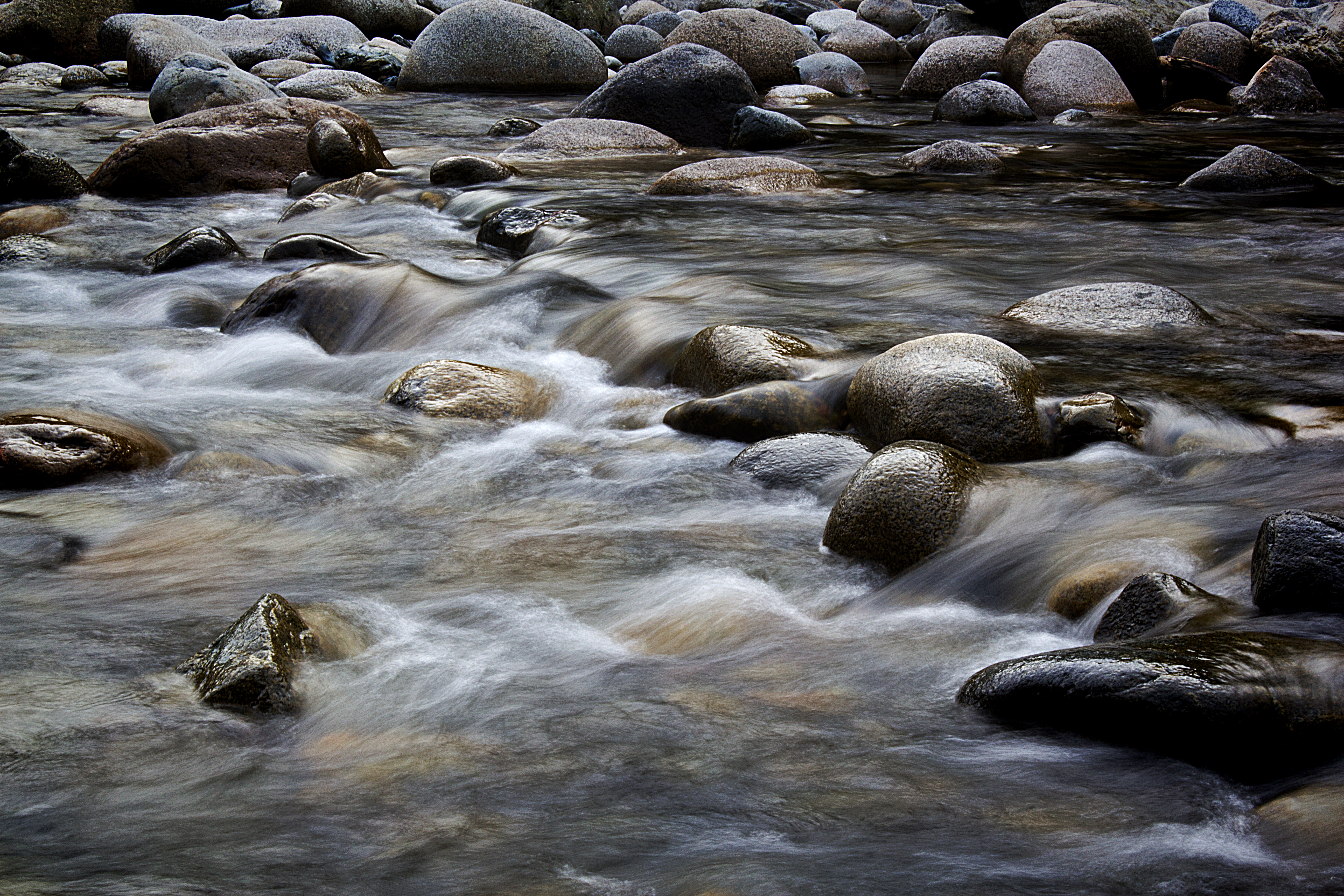 Shutterstock
Shutterstock
It does make sense to me that there are forms of being, knowing and seeing that dramatically exceed our capacity to articulate them, even to perceive them. I found that very strongly with the work I have been doing on rivers, where legally, in many jurisdictions, people are being encouraged to imagine rivers as alive, as forces, as presences in the world, and their language's encounter with that immediately shows language's fallibility, its shortfall in response to ideas as radical as that. I am a landscape mystic insofar as I have always been drawn to places where language itself begins to crumble and recognize that it is deteriorating into a shatter belt of utterance.
Deep time and responsibility
From the beginning, I have been interested in what is sometimes called, what I like to call, deep time. Deep time is a young phrase for a very old concept. It comes from John McPhee, the New Yorker writer who wrote these extraordinary books about American geology in the 70s and 80s. It refers to the dizzying expanses of planetary time that stretch behind us all the way back to the birth of the Earth, 4.3 to 6 billion years ago. Deep time also stretches ahead of us because the Earth will outlast us. In the mountains, you see deep time laid bare. That is where I first met it. When you look across space, you are also looking back in time. I have walked on rocks that are some of the oldest surface rocks on the planet, and you find them in the Outer Hebrides, the Western Isles and also up on the Canadian Shield in eastern Quebec. This has another extraordinary effect. It annihilates the human units of time. Aeons, epochs, they really destroy in one sense the second, minute, year and lifetime. They have another effect, or should have this effect, which is the more interesting one, to radicalize us, which is to recognize that we are the inheritors of billions of years of gift, of legacy-leaving, and that we in turn ourselves are legacy-leaving creatures, a legacy-leaving species; what we do now will shape the future to come. Deep time is both an aesthetic, a temporal thrill but also an ethical, even a political challenge.
Editor’s note: This article has been faithfully transcribed from the original interview filmed with the author, and carefully edited and proofread. Edit date: 2025
Discover more about
movement’s relationship to knowledge
Macfarlane, R. (2025). Is a River Alive? Hamish Hamilton.
Macfarlane, R. (2013). The Old Ways. Penguin.
Macfarlane, R. (2007). The Wild Places. Granta.
Macfarlane, R. (2003). Mountains of the Mind. Granta.
Muir, J. (2017). Selected Writings. Everyman.
Merleau-Ponty, M. (2012). Phenomenology of Perception. Routledge.
Shepherd, N. (2011). The Living Mountain: A Celebration of the Cairngorm Mountains of Scotland. Canongate.
Robinson, T. (2020). Experiments on Reality. Penguin.
Deakin, R. (2008). Wildwood: A Journey Through Trees. Penguin.
Deakin, R. (2024). Waterlog. Vintage Classics.
McPhee, J. (2015). Coming into the Country: Travels in Alaska. Daunt Books Publishing.